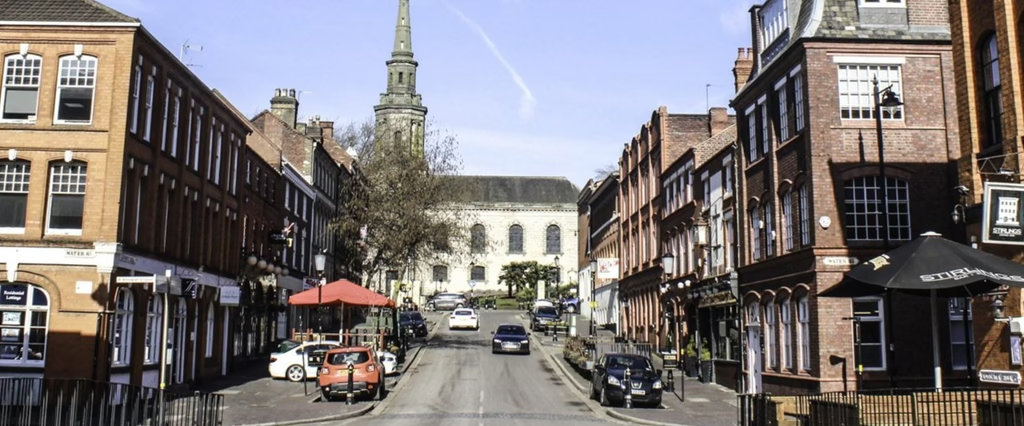Forged in History, Crowned with a Future: Why ‘World Craft City’ is More Than Just a Title for Birmingham
In the heart of England, nestled beside Birmingham’s bustling city centre, lies a district that gleams with a quiet, yet profound, brilliance. For over two and a half centuries, the Birmingham Jewellery Quarter has been a crucible of creativity, a place where precious metals and gemstones are transformed into works of art. It’s a living museum, its cobbled streets and historic red-brick buildings echoing with the ghosts of artisans past. Yet, for all its immense contribution, it has largely operated with a humble diligence, away from the global spotlight, it’s jewelry Heritage.
That is, until now. The recent designation of Birmingham as a “World Craft City for Jewellery” by the World Crafts Council has cast a brilliant, international light on this storied enclave. But beyond the prestige and the celebratory headlines, what does this monumental award truly mean for the city once known as the “workshop of the world” and for the 4,000-strong community of jewellers who call the Quarter home?
This isn’t just an award; it’s a validation of a legacy, a catalyst for the future, and a long-overdue opportunity for a community of makers to finally, as one academic puts it, “shout out about our work.”
A Legacy of Quiet Mastery: 250 Years of Unsung Brilliance
“As jewellers, we don’t shout out about our work,” explains Rebecca Skeels, a key academic and lecturer in Jewellery at Birmingham City University. Her statement encapsulates the ethos of the Quarter perfectly. This isn’t a place of flamboyant self-promotion; it’s a place of dedicated craft. The proof, for centuries, has been in the product, not the publicity.
The statistics alone are staggering. “The Jewellery Quarter still makes 40% of the jewellery that comes out of the UK,” Skeels notes. It’s a figure that often surprises people, a testament to the sheer scale and skill concentrated within this one square kilometre. This award, therefore, serves as a global recognition of a fact that has long been an industry-insider secret: that Birmingham is, and always has been, a powerhouse of global jewellery production.
The Cornerstone of a Craft: The Birmingham Assay Office
To understand the rise of the Jewellery Quarter, one must first understand the pivotal role of a single institution: The Birmingham Assay Office. Founded in 1773 through the tireless lobbying of the legendary industrialist Matthew Boulton, the Assay Office was the catalyst that transformed a scattered collection of artisans into a world-renowned industrial hub.
Before its establishment, local silversmiths and jewellers faced the arduous and costly task of sending their wares to Chester or London to be tested and hallmarked—a legal requirement to verify the purity of the precious metal. The opening of a local office, with its distinctive anchor hallmark, was a revolutionary development. It wasn’t just a convenience; it was a declaration of quality and a magnet for talent.
“The Assay Office encouraged a lot of trade in the area,” says Skeels. “So as the population of jewellers grew, that’s how it got its name.” This institution provided the infrastructure of trust. A piece bearing the Birmingham anchor was a guaranteed mark of quality, allowing trade to flourish and a unique ecosystem of suppliers, toolmakers, stone setters, and polishers to coalesce around it.
From Back Rooms to Bustling Showrooms: The Architecture of a Trade
Walk through the Jewellery Quarter today, and you’ll notice its unique architecture. The grand Victorian and Edwardian buildings, with their ornate facades and large ground-floor windows, weren’t initially designed as the chic boutiques they are now. They were homes.
“A lot of craftspeople were just setting up in their homes, with small factories developing in their houses,” Skeels elaborates. This architectural DNA tells the story of the Quarter’s humble beginnings. Imagine a world where the family lived upstairs, while the ground floor and back room served as a workshop—the air filled with the scent of metal and polishing compound, the rhythmic tap-tap-tap of a tiny hammer providing the home’s heartbeat. The shop fronts that now showcase dazzling finished pieces were once the very spaces where those pieces were painstakingly brought to life.
This history of cottage industry scaling up to global significance is exemplified by brands like ACME Whistles. “Joseph Hudson set up in his house on a bench right here,” Skeels points out. “That is something we don’t shout about.” From that single bench, a company was born that would supply whistles for the Titanic and police forces around the world. The Quarter is filled with such stories of modest beginnings leading to extraordinary global impact.

More Than Tradition: A Hotbed of Constant Innovation
The World Craft City award isn’t merely a historical accolade. It also celebrates the Quarter’s relentless spirit of innovation. While steeped in tradition, this has never been a place that rests on its laurels. It is a hub where age-old skills meet cutting-edge technology.
“This title means we really get to celebrate the history and future of the industry in the area,” Skeels emphasizes. “It’s been here for over 250 years, through innovation of new things, like electroforming, plating and stone setting—particular skills that were developed and invented here.”
These weren’t just minor tweaks; they were transformative techniques that pushed the boundaries of what was possible in jewellery design and manufacturing. Electroforming allowed for the creation of large, hollow, yet durable pieces, while advancements in plating and setting redefined industry standards. This spirit continues today, with modern artisans utilising 3D printing, laser welding, and CAD design alongside centuries-old hand-crafting techniques. The award acknowledges this dynamic tension between heritage and progress, celebrating the Quarter as a place where the future of jewellery is actively being forged.
A Crown for the Future: Championing Diversity and the Next Generation
Perhaps the most profound impact of the World Craft City status lies in its potential to shape the future. For many, this award is a powerful tool to amplify unheard voices and build a more inclusive and accessible industry for generations to come.
Norma Banton, the inspirational founder of the MasterPeace Academy, sees this as a pivotal moment. “I’m excited for the next generation of jewellers and for the Black jewellers because we need to raise our profile,” she states with passion.
Uncovering Hidden Histories
Banton shines a light on the often-overlooked contributions of Black craftspeople to the Quarter’s success. She describes how, during the post-war Windrush years, many Black men and women brought their skills and labour to the factories of the Jewellery Quarter, becoming a vital part of its engine room. Their talent and hard work, however, were often uncredited, their stories absorbed into the monolithic history of the industry.
“Historically, the talent and contribution of Black people within the Jewellery Quarter had been overlooked,” Banton explains. This award, she hopes, will provide a platform to uncover and celebrate these hidden histories, to ensure that the narrative of the Quarter reflects all the hands that helped build it. It’s an opportunity to reframe the story, giving a voice and a face to the unsung heroes of the trade.
Bridging the Divide: From Affluence to Access
The Jewellery Quarter presents a stark social contrast. It is, as Banton describes it, “quietly affluent,” a gleaming island of heritage and commerce. Yet, it is directly surrounded by areas like Handsworth, Hockley, Aston, Lozells, and Ladywood—communities that have faced significant economic and social challenges. For too long, a psychological, if not physical, barrier has existed between the prestigious workshops of the Quarter and the diverse, vibrant youth in its immediate vicinity.
Banton sees the World Craft City award as a bridge. It is a chance to demystify the trade and make it accessible to local young people who may have viewed it as an exclusive, unattainable world.
“I hope this will be the beginning of us as jewellers making the trade more accessible to those young people from the local community and let them know there are nurturing spaces for them to have successful careers,” she says. “We do need to raise our voices to let the world know that we’re here, and let the next generation of jewellers know that this trade is really for them.”
The vision is clear: to use this global recognition as a catalyst for outreach, for mentorship programs, for apprenticeships that connect directly with local schools and youth centres. It’s about ensuring that the next generation of master jewellers can come from any background, reflecting the true diversity of the city of Birmingham itself.
In conclusion, the World Craft City award is far more than a decorative title. It is a multifaceted honour that resonates through the past, present, and future of the Birmingham Jewellery Quarter. It is a global acknowledgement of 250 years of quiet, persistent excellence. It is a celebration of an innovative spirit that continues to thrive. Most importantly, it is a powerful mandate for the future—a future where hidden histories are brought to light, where diversity is championed, and where the doors of this historic trade are thrown wide open to the community at its doorstep. The world’s eyes are now on Birmingham, and the city’s jewellers, after centuries of quiet diligence, are finally ready to show them the full, dazzling scope of their brilliance.



